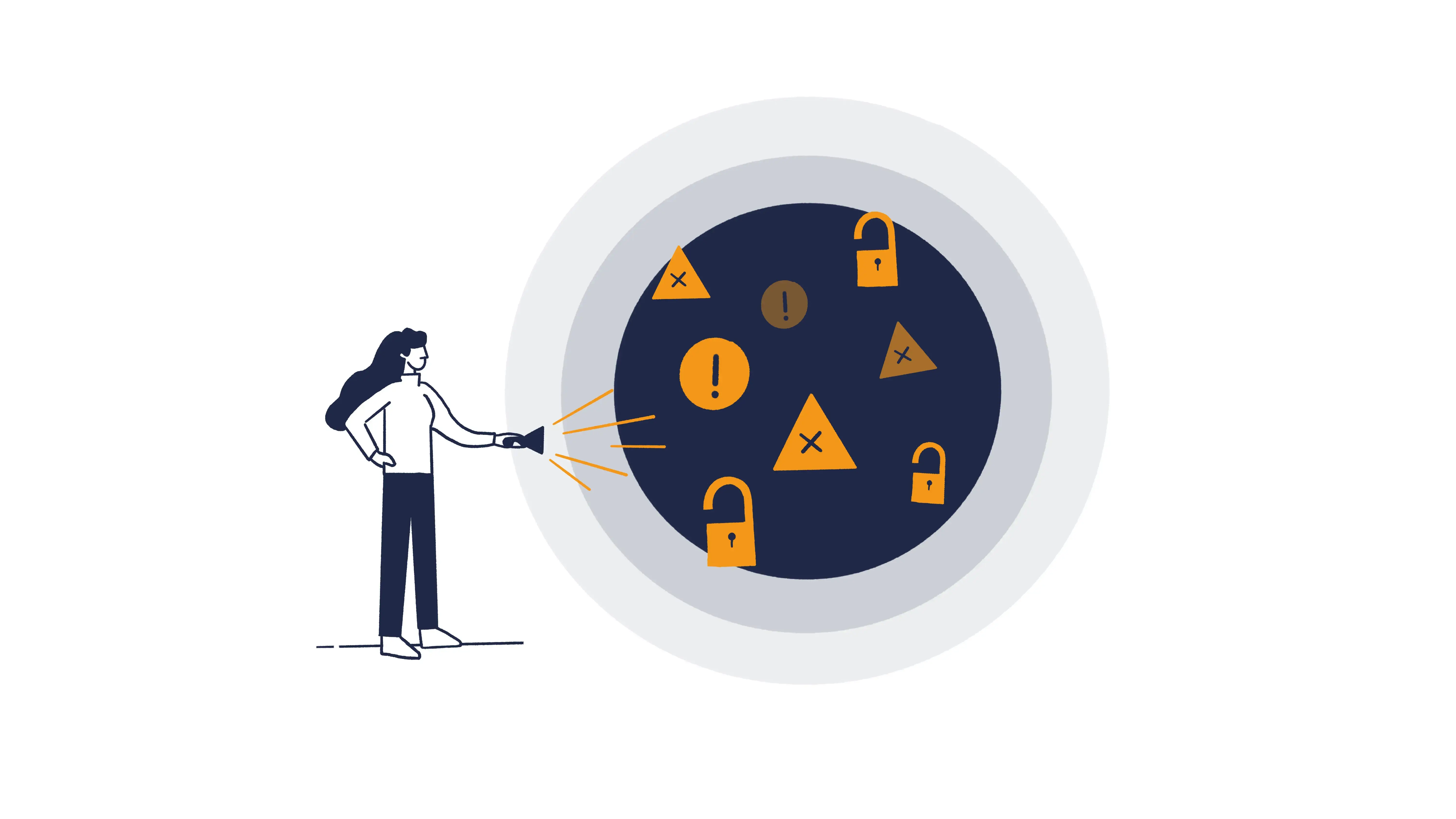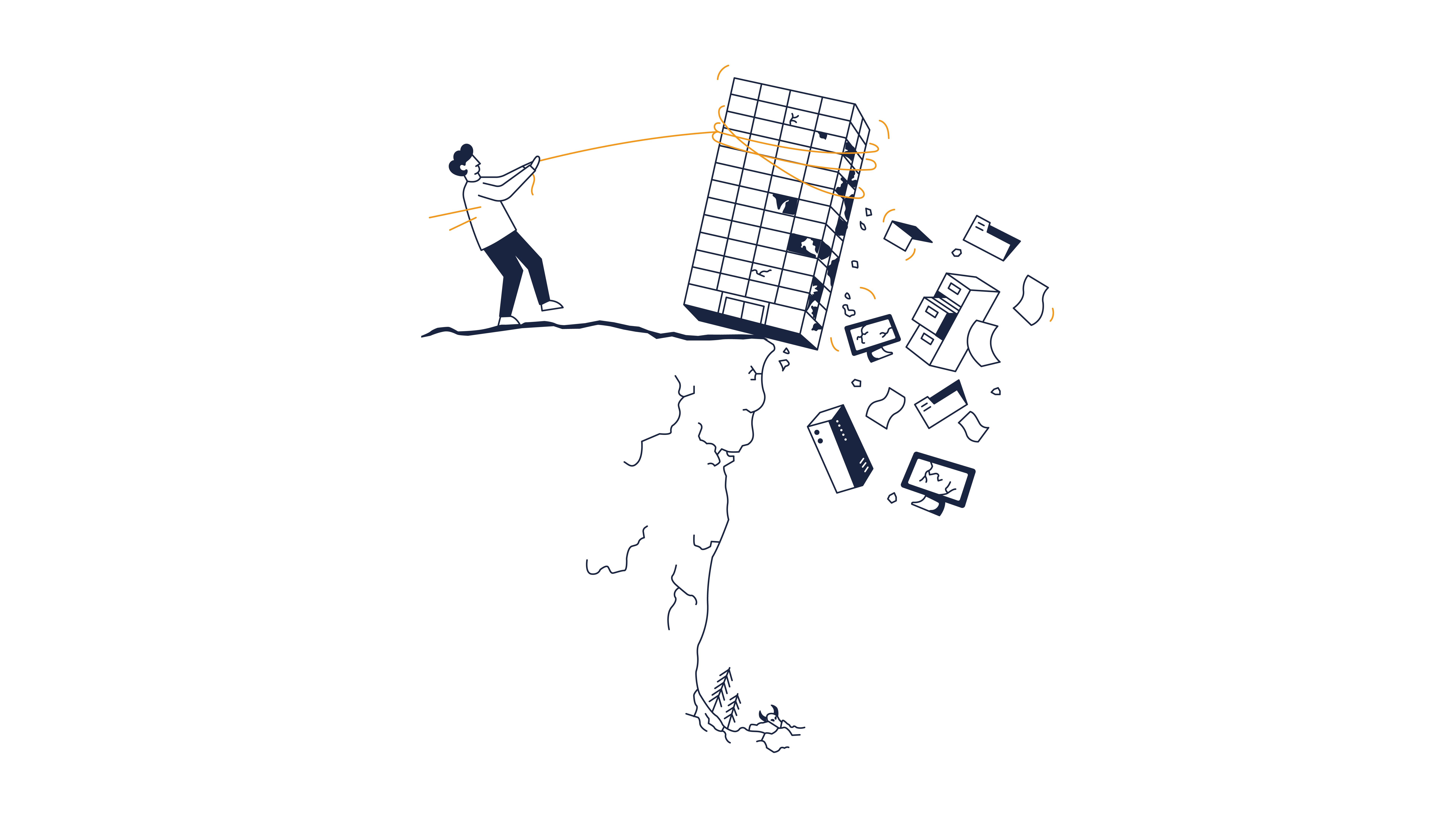ASM is a proactive approach to cybersecurity that helps organisations identify and secure all possible entry points that attackers might exploit. In an era of expanding digital footprints and evolving threats, effective ASM is crucial for maintaining cyber resilience.
This article explores the fundamentals of ASM, why it matters, how to implement it effectively, and the tools and strategies that make it work.
Key takeaways
- ASM is essential for identifying vulnerabilities across digital, physical, and human (social engineering) attack surfaces.
- Core components include asset discovery, risk assessment, continuous monitoring, and regular security evaluations.
- Automation and the right ASM tools enable faster, more accurate detection and response to emerging threats
What is Attack Surface Management (ASM)?
Attack Surface Management refers to the continuous process of identifying, classifying, and monitoring all assets, known, unknown, internal, external, and third-party, that could be leveraged by an attacker.
This includes everything from public-facing web apps to misconfigured cloud services, orphaned databases, shadow IT, and even social media exposure. ASM gives security teams visibility into the entirety of an organisation’s attack surface, enabling them to remediate weaknesses before adversaries exploit them.
The scope of ASM has grown significantly in response to:
- Cloud adoption and remote work, which expand attack surfaces
- The rise of supply chain and third-party risks
- Increasing ransomware attacks exploiting overlooked systems
ASM transforms security from reactive to proactive, helping organisations anticipate where and how attackers might strike.
What are the three attack surface types?
1. Digital attack surface
This includes any internet-facing or cloud-connected asset, such as:
- Web apps and APIs
- DNS configurations
- Digital certificates
- Cloud environments (e.g., AWS, Azure, GCP)
- Forgotten or misconfigured assets
Example: A misconfigured Amazon S3 bucket exposing sensitive data.
3. Physical attack surface
This refers to devices and infrastructure with physical access risk:
- Laptops, IoT devices, USB ports
- Office buildings and server rooms
- Printers, access points, forgotten endpoints
Best practices include access controls, biometric authentication, and asset inventory management.
3. Social engineering attack surface
This is the human layer, the easiest to exploit:
- Phishing emails
- Deepfakes and impersonation
- Public LinkedIn or social media info
Mitigation: Regular employee security awareness training, phishing simulations, and zero-trust enforcement.
What are the most common attack vectors that threat actors exploit?
These include:
- Phishing and credential theft
- Unpatched software and outdated systems
- Misconfigured cloud services
- Weak passwords or reused credentials
- Third-party access and vendor integrations
Mitigation tip: multi-factor authentication (MFA), vulnerability scanning, and regular patch management.
What are the 4 steps of the ASM lifecycle?
1. Asset discovery
Uncovers known and unknown assets across on-premises, cloud, SaaS, and third-party environments.
Identifies orphaned servers, rogue databases, shadow IT, and unregistered domains.
2. Attack surface analysis
Maps relationships between assets and evaluate exposure levels. Use context-aware tools to identify weak points and exploitable paths.
Prioritises assets by sensitivity, exposure, and accessibility.
3. Risk prioritisation and remediation
Assesses vulnerabilities by severity and business impact.
- Uses CVSS scores, exploitability likelihood, and business value
- Automates remediation workflows where possible (e.g., disabling unused services)
4. Continuous monitoring
Maintains a live, dynamic inventory of assets.
- Receives real-time alerts for newly exposed assets
- Tracks changes from cloud misconfigurations or new deployments
- Integrates into SIEM/SOAR platforms for improved incident response
What are the key strategies to reduce the attack surface?
- Zero-trust architecture: Deny by default, verify explicitly
- Network segmentation: Restricts lateral movement and isolate systems
- Legacy systems elimination: Replace or isolate outdated tech
- Disabling of unused services/ports to minimise unnecessary exposure
- Routine audits: regularly inventory assets and permissions
What is the role of automation in ASM?
Manual ASM is impossible at scale. Automation ensures continuous and real-time response.
- Automated asset discovery ensures nothing is overlooked
- Machine learning flags abnormal behaviors or configurations
- Auto-remediation for known misconfigurations or expired certificates
How do I select the right ASM tools?
When evaluating ASM tooling, consider:
|
Criteria |
Description |
|
Breadth |
Can it discover assets across hybrid, multicloud, and on-prem environments? |
|
Contextual Risk |
Does it assess business impact, not just vulnerabilities? |
|
Integrations |
Can it plug into SIEMs, SOARs, and CMDBs? |
|
Usability |
Is it intuitive for both analysts and engineers? |
|
Automation |
Does it support continuous discovery, classification, and remediation? |
Conclusion
Apart from reducing threat exposure, attack surface management brings in a wealth of benefits:
- Improved visibility across digital assets
- Faster incident response
- Better resource allocation and prioritization
- Compliance with regulations like GDPR and NIS2
Attack Surface Management is at the very core of a modern, proactive security strategy. In a world where digital borders are porous, ASM helps organisations stay on top of risk. By continuously discovering assets, evaluating risks, and automating remediation, businesses can reduce their exposure and start building cyber resilience.
Further reading
Frequently Asked Questions
What is Attack Surface Management (ASM)?
Attack Surface Management (ASM) is the continuous monitoring and analysis of an organisation's attack surface to identify vulnerabilities and potential attack vectors, ultimately aimed at reducing the risk of cyber attacks. This proactive approach is essential for enhancing cyber resilience.
What are the key components of ASM?
The key components of ASM are asset identification, risk assessment, continuous monitoring, and regular security assessments. These elements are essential for effective asset management and risk mitigation.
What types of attack surfaces exist?
The primary types of attack surfaces are digital, physical, and social engineering, each necessitating targeted security strategies for effective management. Understanding these surfaces is crucial for enhancing overall security posture.
How does automation enhance ASM?
Automation enhances ASM by streamlining processes like asset discovery, vulnerability detection, and remediation, which allows for continuous monitoring and quick responses to emerging threats. This leads to more effective and efficient security management.
What strategies can reduce the attack surface of a company?
Disabling unnecessary software and devices, adopting a zero-trust security model, implementing network segmentation, and conducting routine audits are effective strategies to significantly reduce an organisation's attack surface. These measures collectively enhance security and mitigate potential vulnerabilities.



